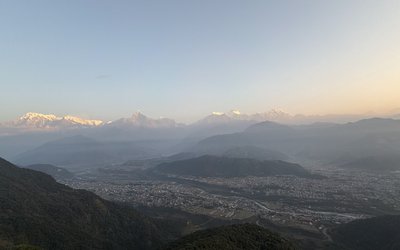Cholera ( Vibrio cholera is the bacteria) remains a worldwide problem with sporadic cases (as in Nepal) related to contact with fecally contaminated water. Just like typhoid, another common infectious disease in Nepal, cholera is restricted to humans. That is, humans are the only reservoir for this disease. Most cases are reported in Africa or Asia. After the earthquake and breakdown in public health measures, cholera returned to Haiti after more than a century. The Nepali peace-keeping contingent were embarrassingly implicated in the outbreak in Haiti.
The watery diarrhea of cholera called “rice water” (“chaulani”) refers to the appearance of water after soakingrice. Because we are voracious rice eaters, most Nepalis will have no problem in recognizing “chaulani”. The main reason people die from cholera is volume depletion brought on by the vibrio toxin which triggers a rapid outpouring of fluid into the intestine from the cells lining the gut. Because our bodies are 60% water, cholera diarrhea feels like a sponge being wrung out. Drinking water to replace the loss wont do it because the intestine wont absorb the water. As a result the death rate can be 70%.
During the nineteenth century, cholera pandemics killed millions across Asia, Europe, Africa, and North America. Blue Death was the name given to cholera then because of the blue grey colour imparted to the skin due to extreme dehydration. Then, in early 1900s, intravenous fluids administration helped to bring the mortality down to 30 %. But whoreally made a difference in lowering the death rate in Western countries were people like Joseph Bazelgette, a UK engineer, who in the late 1800s built interceptor sewers along the banks of the Thames that took care of fecally transmitted diseases like cholera. So the credit truly goes to engineers for taking care of many public health related problems even years ago.
But what about the poorer nations around that time? How did they deal with cholera? Unfortunately globally millions of people especially children continued to die even if patients made it to a medical facility because the intravenous tubing, volumes of sterile fluid, and needles were unavailable or expensive. Engineers like Bazelgette had not started to make an impact in the developing world.
Then in the 1960s two resourceful American researchers based in Dhaka, Bangladesh revolutionized the treatment of cholera.David Nalin and Richard Cash were in Dhaka during a cholera outbreak. At this time other scientists had discovered that sugar helps the gut absorb water. Nalin and Cash decided to test this hypothesis giving patients an oral rehydration solution containing sugar as well as salt, effectively a “noon chinipani” as we know it in Nepal. Many people doubted this would work because the victims would have to drink many liters of this solution per day. Amazingly, the patients drank this vast quantity of fluids, andgot away without intravenous fluids. Indeed this turned out to be an important breakthrough.The story gets even more interesting.
Three years later in 1971 DrDilipMahalanabis was the medical director in a West Bengal camp of three hundred and fifty thousand refugees from Bangladesh’s war of independence when cholera broke out. There were not enough intravenous supplies, so Dilip had no choice but to try the “noon chinipani” Dhaka solution. The results from the oral rehydration were startling, only about 3 % died from the usual 70 % without treatment. The take home message: If cholera victims are alert, able to drink “noon chinipani” in vast quantities, they can save their own lives.

Buddha Basnyat MD
Buddha Basnyat, MD, MSc, FACP, FRCP, Director of the Oxford University Clinical Research Unit-Patan Academy of Health Sciences, Kathmandu.
- Altitude Sickness
- Feb 20, 2018
- Post-earthquake Nepal: The Way Forward
- Dec 13, 2015
- The Annapurna Sanctuary
- Nov 29, 2015
- Diarrhea at the Summit
- Nov 08, 2015
- Altitude Sickness ( AMS, HAPE, HACE)
- Oct 15, 2015















